Black-tailed Deer Grazing Among the Grasses
One morning we saw three different groups of deer
A subspecies of Mule Deer, the Columbian Black-tailed Deer differs greatly from Mule Deer genetically and is about half the size of Mule Deer. These Black-tailed Deer are native to San Juan Island and the surrounding islands. Although they are supposed to be common, we only saw these deer on one morning despite visiting the southern part of the island daily. We were driving through the ‘prairie’ along the Redoubt Road. This road was named after the “Redoubt”, a defensive structure built by the American army during the 1859 Pig War.
The first pair of deer were seen feeding at the end of Redoubt Road. We then drove back to the main road through the prairie and saw three more deer. The grasses were shorter in the prairie and the deer were grazing slowly, but then one deer bolted and ran past us.
An hour later, we were heading back north along the main road and came across a group of five Black-tailed Deer grazing in very tall grasses. The bucks are growing out their new antlers which are covered with thick velvet.
Black-tailed Deer have large ears just as Mule Deers do. Those ears function like radar dishes to help the deer detect danger and pinpoint the direction of sounds. As prey animals, these deer need to be constantly aware of their surroundings.
The deer would graze while walking slowly, and they would regularly look towards our car to make sure of what we were doing. We remained in the car at all times and my photographs were taken at a good distance from the deer. The grasses were so high that at times the deer disappeared behind the vegetation.
As the deer moved parallel to the road, they came over a hill and beside large trees where the ground began to slope downhill.
Deer drop their antlers during the winter and begin to grow a new set each spring. Deer antlers are soft and vulnerable while they are growing. The velvet covering is alive, rich in blood vessels and helps to nourish the growing antler bone. Besides nourishment, the velvet serves as protection, warning the deer if its antlers brush against anything.
It was fascinating to see the deer nibbling at plants as it walked by, but never stopping to graze for a long time.
Besides having a good sense of hearing and good vision, deer also have an exceptional sense of smell. That sense of smell helps deer to find food, detect predators, and navigate their environment. Licking their noses keeps the nose moist. Scent molecules adhere better to wet surfaces so keeping the nose wet helps the deer to detect odors more efficiently.
And besides, licking their noses and lips looks cute……..
Black-tailed deer have no natural predators on San Juan Island. There are no wolves or cougars or bear on this island. Local Foxes can, however, endanger young deer. Besides a short hunting season, other dangers to the deer include disease, vehicle collisions, and loss of habitat. The deer we saw looked very healthy.
The last look we saw as we drove off was of a deer grazing at the top of a rise to the side of the road. Those orange flowers you see were abundant all over the island. They are California Poppies and added a nice accent of color to everything.
Next up, some of the seabirds we saw.



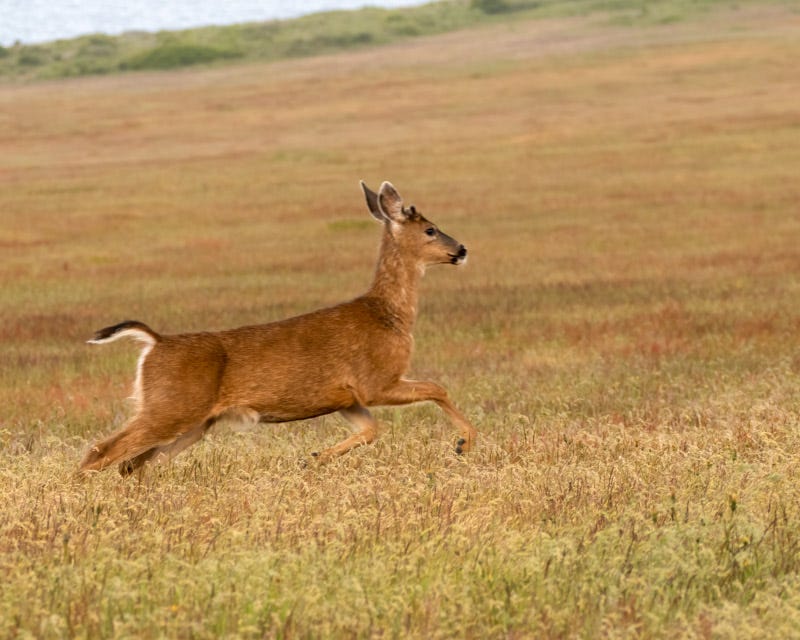
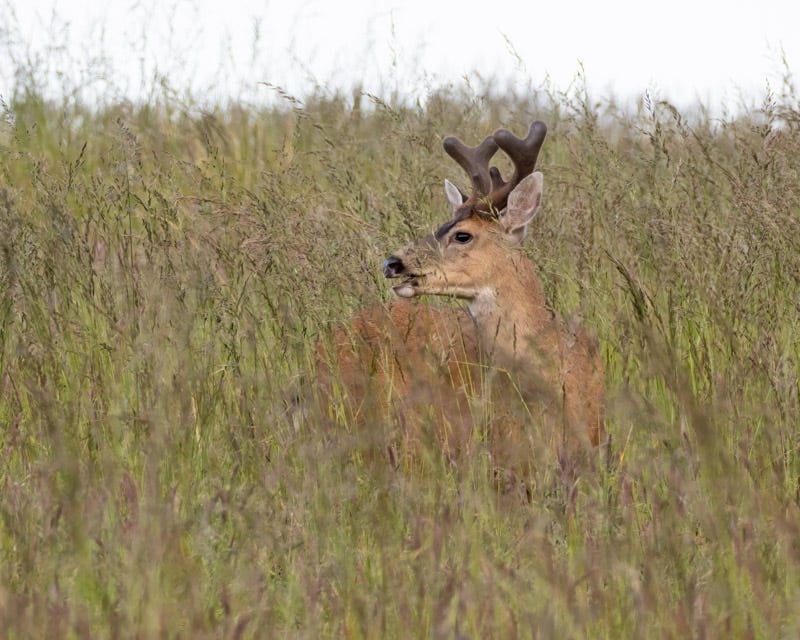
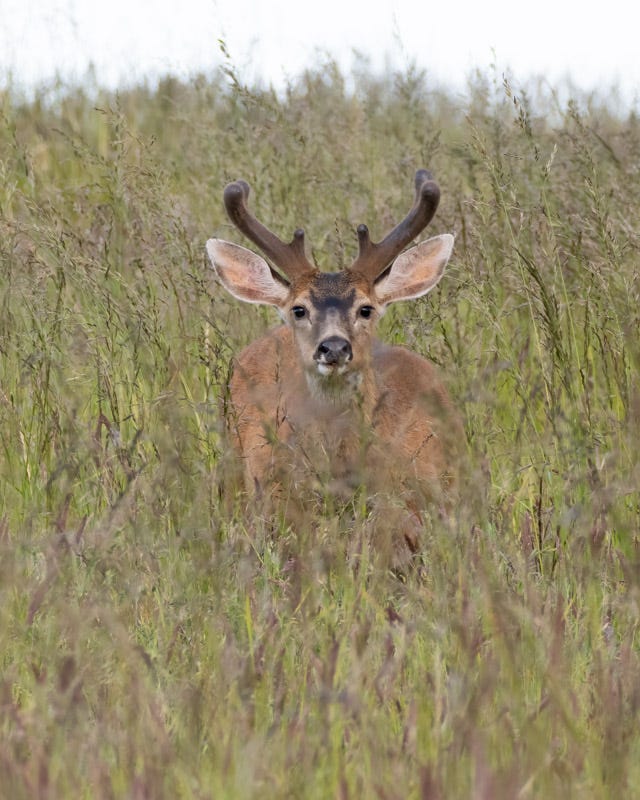
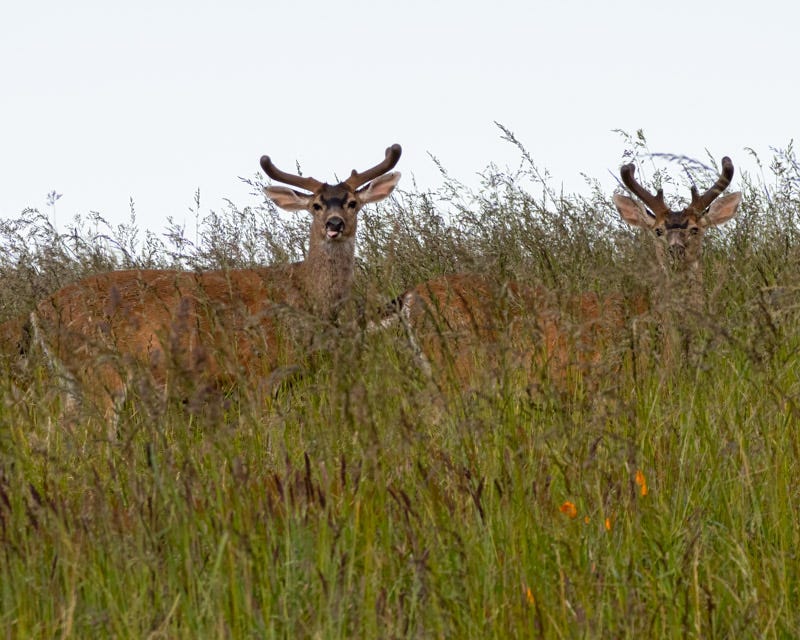

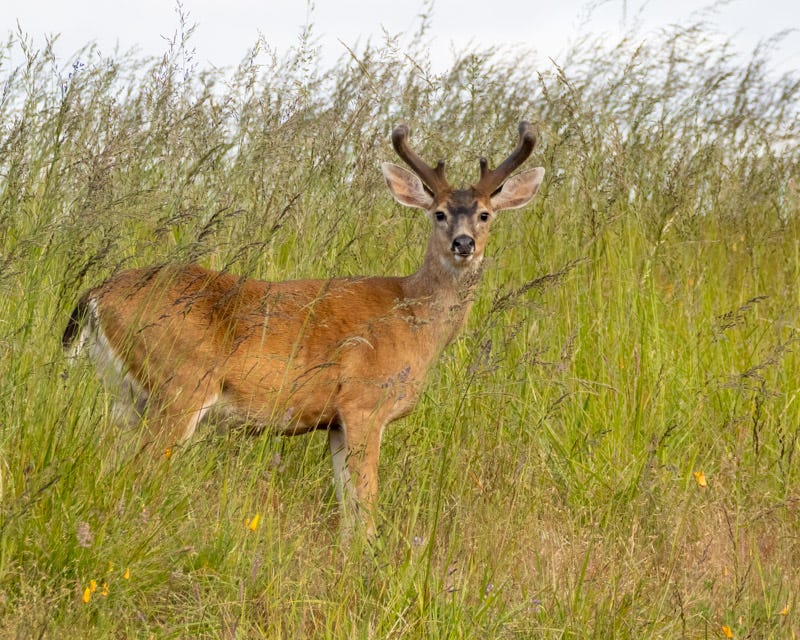
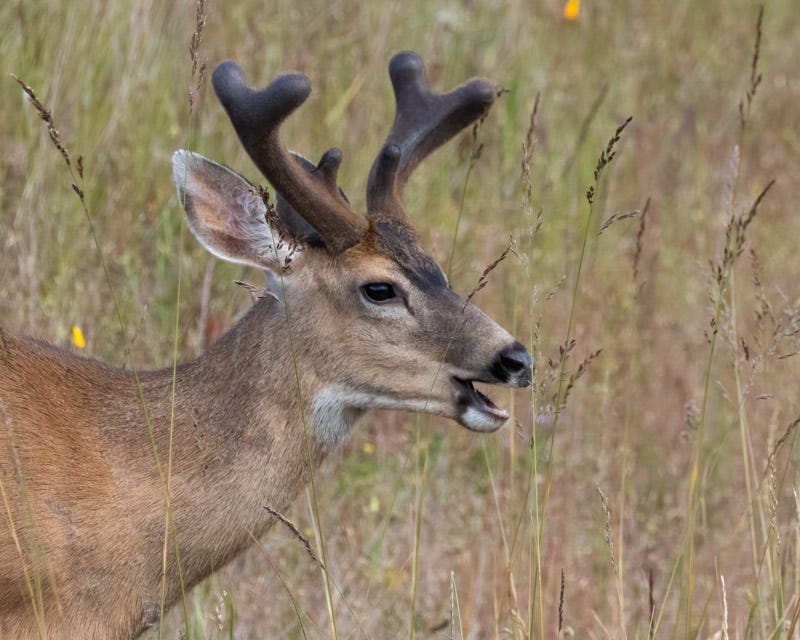



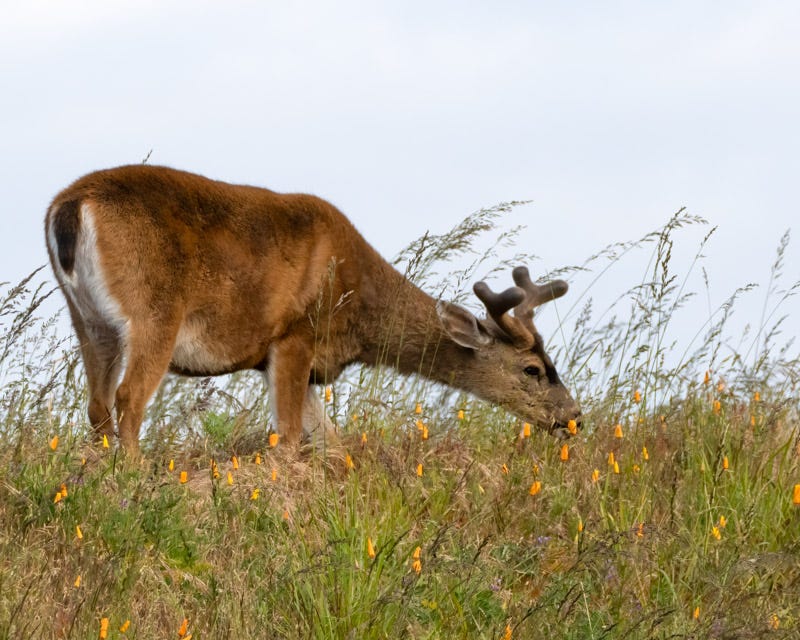
They are so well camouflaged among the prairie grasses!
Haven't seen a good picture of the velvet covering of new antlers. Thank you.